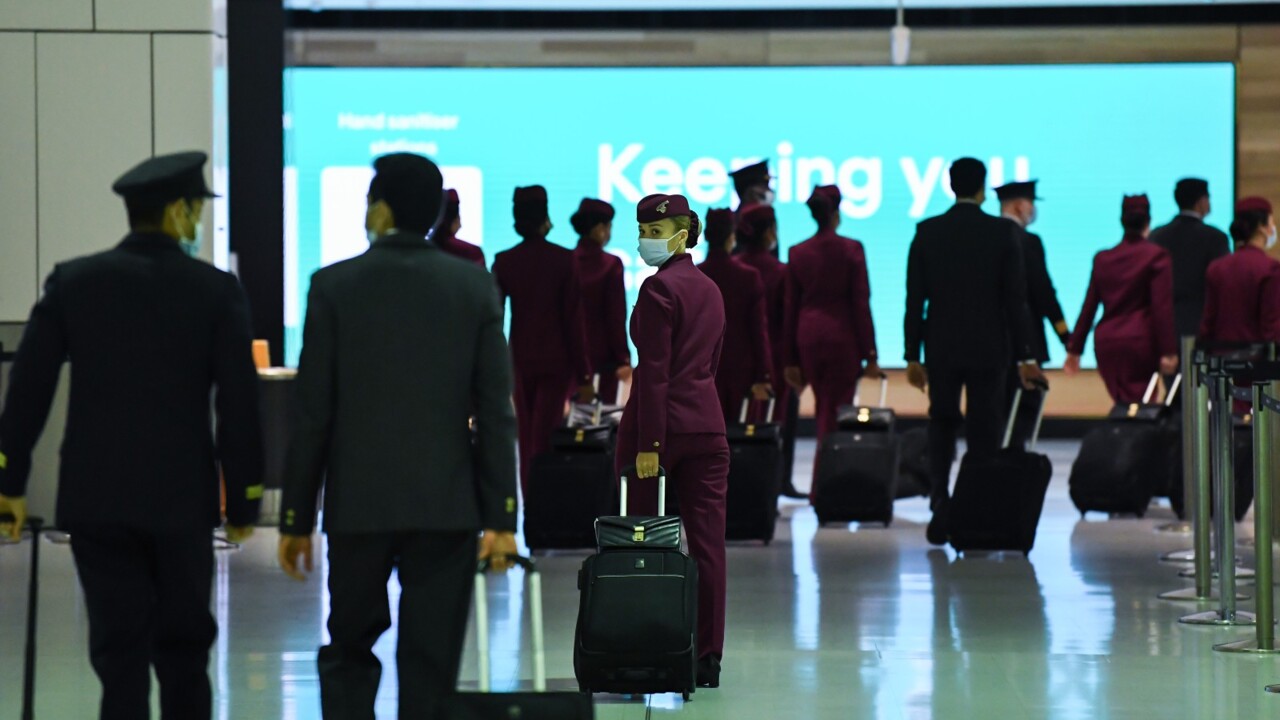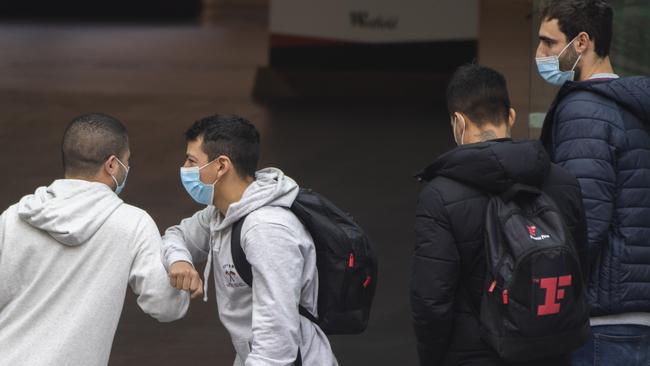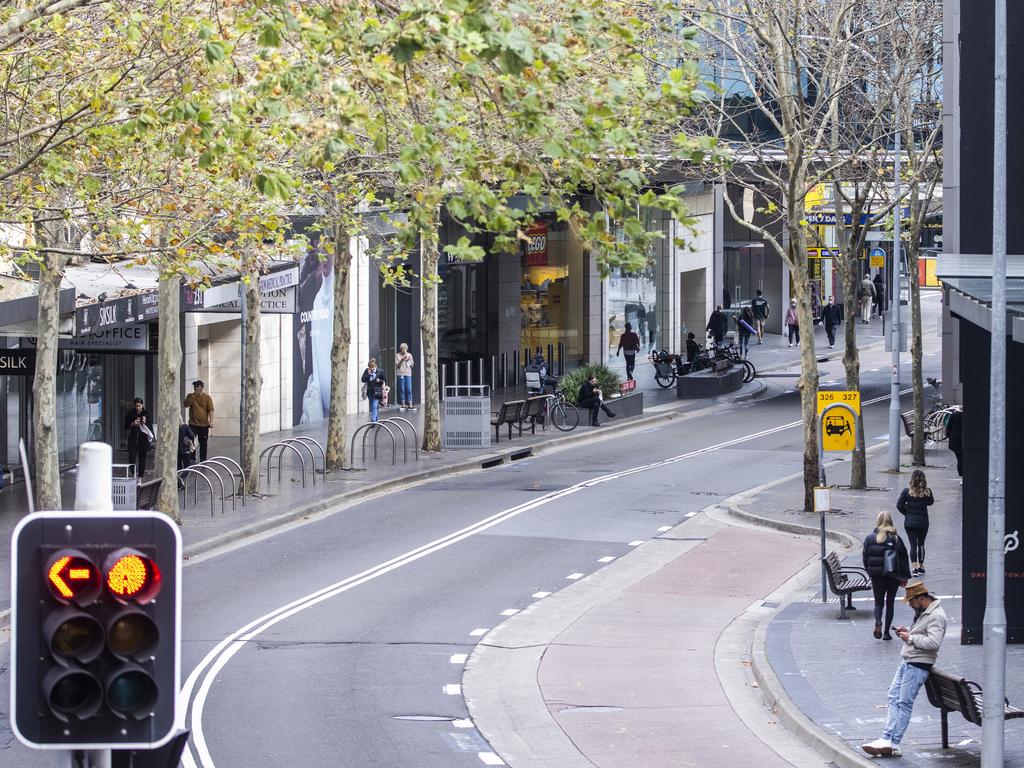Coronavirus: Instant airborne transmission pushes contact tracers to limit
It’s the brave new world of contact tracing – the fleeting moments of crossover between individuals for just a second or two.

It’s the brave new world of contact tracing – the fleeting moments of crossover between individuals for just a second or two that until now would not have been considered a high risk of virus transmission.
The ease with which the Delta variant is infecting individuals has been demonstrated by CCTV footage inside a shopping centre in Sydney’s eastern suburbs which showed how the new variant can spread after moments of inadvertent contact lasting only seconds.
The transmission of Covid-19 within Sydney’s Westfield Bondi Junction among shoppers who only briefly crossed paths, and to an outdoor diner at a cafe who had no contact with an infected case, has proven one thing beyond any doubt – the virus is airborne.
But what is it about the Delta variant that makes transmission following fleeting contact more likely to occur?
“This virus has the ability to grow to a very high viral load very quickly,” said University of Queensland virologist Ian Mackay. “So there’s a lot of virus in the airways. And when we breathe that virus out, we’re expelling more virus than we would be if we had one of the other variants that preceded Delta.
“Some of this terminology like fleeting contact, very short contact and inadvertent contact may simply be related to the fact people are walking through clouds of higher concentrations of virus from an infectious person when they’re infected with Delta.”

The reason that people infected with the Delta variant have higher viral loads relates to the fact that the Delta variant is better adapted to infecting our airways than previous strains. It’s better able to bind to the ACE2 receptor in human cells, meaning the virus replicates faster and more effectively.
“The other factor may be how long this variant survives in the air,” Professor Mackay said. “It may be a little bit more robust. There may be some other mutations in its structure that make it able to survive a bit longer under different conditions. So all of those things factor in to make it more transmissible.”
The Delta variant is estimated to have a replication number of about five, meaning that if there are no interventions in place, one infected person is likely to spread the virus to five others. That compares with the Alpha variant that had an estimated R0 of 3.75, and the original Wuhan strain with an estimated R0 of just 1.8 to 2.
“Since the pandemic started, this is perhaps the scariest period that NSW is going through,” Premier Gladys Berejiklian said on Thursday. “It is a very contagious variant but at the same time we are at this stage comfortable that the settings that are in place are the appropriate settings, so long as everybody does the right thing.”
There have been 49 people infected with the Delta variant so far in NSW’s latest outbreak. The original source of the outbreak was a limousine driver aged in his 60s who was transporting international aircrew and had not been vaccinated or undergoing daily testing. He was also not wearing an N95 mask. The driver spread the virus to his wife. Two days after their cases were recorded, NSW Health confirmed the driver had spread the virus to a woman in her 70s at a cafe in Vaucluse in Sydney’s east, even though the pair had no direct contact and the infected woman was sitting outside.
On June 19, health authorities confirmed another transmission following “fleeting” contact between the driver and a shopper at Westfield Bondi Junction.
All but three of the 36 cases recorded in this outbreak have been linked to confirmed cases, but NSW Health is still working to trace how transmission occurred in a nine-year-old eastern suburbs primary school student, a hairdresser working at a salon in Double Bay, and a person who acquired the virus in a health facility waiting room.
Ten of the cases recorded in the latest outbreak are associated with a superspreader event at a West Hoxton birthday party that was attended by 30 people. Two cases in Victoria are also believed to be linked to the party
On Thursday, the outbreak spread to the NSW parliament as Agriculture Minister Adam Marshall tested positive after attending a known exposure site, a pizza restaurant in Paddington.
Testing numbers have been high in NSW during this latest outbreak, with 48,402 tests carried out on Wednesday and 44,640 tests carried out on Tuesday.
NSW chief health officer Kerry Chant on Thursday said contact tracers faced the daunting challenge of dealing with people who may have simply crossed paths or stepped onto an escalator near an infected person.
“In circumstances where we have CCTV footage we can see the distance people are away from each other,” Dr Chant said.
However, University of Queensland virologist Kirsty Short said evidence of the transmission of the Delta variant via fleeting or inadvertent contact was only anecdotal at this stage, and there was nothing to suggest that the variant had a shorter incubation period than the original Wuhan strain at around four days.
“What we know from the epidemiology data is that the Delta variant is more transmissible than the Alpha variant. We know that from the UK data,” Dr Short said. “How it’s more transmissible, we don’t really know for sure.
“There are multiple ways in which a virus can be more transmissible. It can be that it replicates better in an infected individual, and therefore that infected individual sheds more virus. Or it could be that the virus is better able to replicate or infect an individual. So say previously you needed 100 virus particles to infect an individual, maybe now with this variant you need only 50 virus particles.
“So whether this fleeting transmission is a freak incident or whether it’s something about this variant, we don’t really know.”
Professor Mackay said people should feel reassured, however, that the same measures that were effective in reducing the transmissibility of the original Wuhan variant work with the Delta variant.
“This variant is more transmissible, and there may be variants down the track that are even more transmissible, but they still don’t travel through a solid wall or jump through a properly used mask.
“But we need to add in the fact that we’re dealing with airborne transmission events and that we have to be conscious of the air around us all the time.”








To join the conversation, please log in. Don't have an account? Register
Join the conversation, you are commenting as Logout